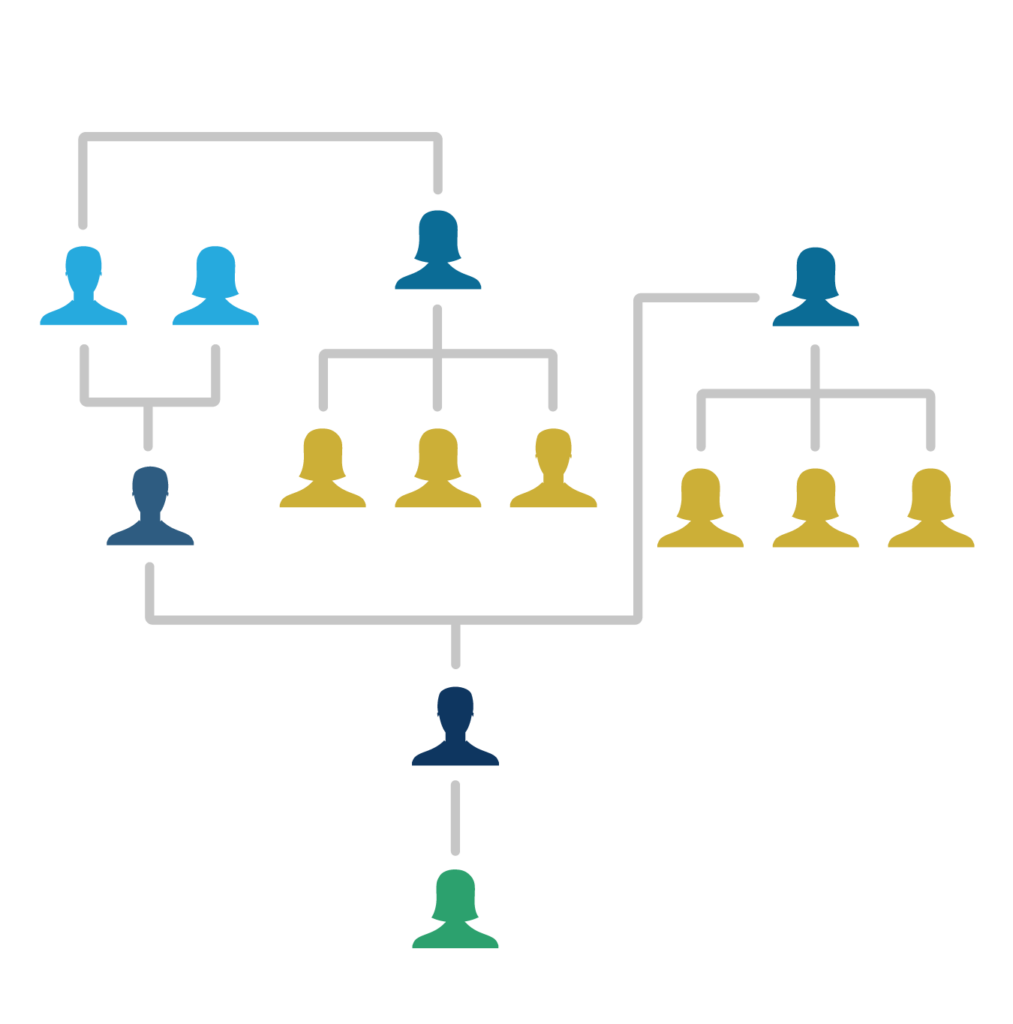Recently, I ran into a former client from my digital marketing agency days who was now working with a developer I used to hire as a contractor on several website projects. He gave me one of the greatest compliments I could get as an entrepreneur.
After catching up, I asked: “How’s Eric working out for you?”
“He’s been great. He’s even better than you!”, he replied.
While his wife seemed a bit taken aback, I said, “Thank you! That’s why I always hired him for my projects!”
Success in any industry requires entrepreneurs to hire beyond their capacity, even their ability. I’d even go so far as to say when it comes to key positions in a company if you feel you can do the job better than those you’ve hired, you’re probably hiring the wrong people.

Hierarchy vs hire-archy CHART

If it’d help, I’d blame decades of “Mad Men“-level thinking that has most business owners putting themselves at the top of all things related to their business. Some companies strive to escape this ideology of bosses, using terms like “direct reports” instead of “underlings” (a term I heard someone use when referring to those they manage during a webinar recently).
While this structure rightfully resembles the flow of leadership within the organization and who employees at each level are accountable, it could interfer with the mindset needed to hire individuals with the skills necessary to continue scaling and growing an agency.
When hiring to develop a team-managed home care agency, owners and hiring managers should constantly seek out individuals whose skills for the role exceed those of the individual currently responsible for the tasks that the position will assume. Hiring above one’s skillset is hiring for growth.
In the ‘delegation hire-archy’ graphic, you’ll notice that most individuals directly reporting to someone ‘above them’ in a traditional hierarchy chart show greater skills than the person they report to. While some employees in this chart illustrate downward skill from the person they report to, this should only occur in entry-level positions.
Even in these entry-level positions, your team should seek out hiring those with greater skills or the potential for greater skills as a priority over those who will become stagnant in their roles. Scaling and growing requires a greater capacity – either learned or brought in through hiring – than your agency’s current level.

Growth-minded recruiting
During several masterclasses or sessions over the years, you may have heard Clint say, “We recruit to grow the business, not fill a shift.”
With turnover being significant for many home care agencies, there can be discouragement and a sense of overwhelm when shifting one’s mindset from the reactive impulse of hiring to take care of clients just onboarded to hiring in preparation for the clients to come. Changing how your recruit puts your agency in a better position to respond to opportunities instead of react to urgencies.
When you hire for growth, you can be more selective in who you recruit. You can define your ideal caregivers based more on your brand promise and your right-fit clients than only out of availablity on a calendar. (Some exaggeration intended, but not far off.) You, your Operator, Scheduler, Caregiver Recruiter/Trainer, and Care leads can get on the same page on key factors to evaluate candidates on. This strategic hiring approach will provide for increased retention of employees at every level in the agency and set your team up for greater success in scaling and growing.
Selective hiring based on parameters you set results in a position of selecting from among the best your market offers versus choosing between candidates not aligned with the goals of your agency. There are three areas I recommend you start with when evaluating current employees in their roles and prospective hires: Compassionate | Compelled | Capable
Compassionate
One of my favorite aspects about working in this industry is how much heart, passion, and compassion can be found in the caregiver in the client’s home to leaders of the largest home care companies.
The level of compassion you assess will certainly vary based on the position but it is a signal they get what the industry is about and your agency’s purpose. For a caregiver role, does the individual have a caregiver’s heart? For an office staff role, are they compassionate toward clients and caregivers, willing to serve adequately (with a certain level of accountability, naturally) for the company’s desired outcomes?
Capable
Far too many are heavy on staffing based on compassion and overlook capacity. Capable can mean the employee already has the training, experience, and expertise – or you’ve determined they can be trained into the role. Your leadership team will need to analyze current and prospective employees based on the demands of the role – both presently and where that role will expand to – and determine if the individual is capable of the roles, responsibilities, requirements, and expected results.
Compelled
Individuals who are compelled are driven from within for the role. They want to take on the responsibilities, making delegating far more successful. Leadership and others in the organization can count on someone internally compelled to do the work to be accountable and expand the role. They don’t require being compelled by management with tasks or other non-productive incentives. Instead, you’ll find them developing and bringing suggestions for positive changes that will lead to growth.
And, the next step is...
As a leadership team, go deeper into how your organization defines compassionate, capable, and compelled. Set key criteria for each that will be used to simply say “Yes” or “No” when evaluating the individual against the position.
Clint Nobles developed a tool that helps define critical aspects of positions home care agencies are recruiting for. The 4R Document and the Questionnaire will help establish a job description to attract the right-fit employees for the role and to evaluate your team members based on their Roles, Responsibilities, Results, and Requirements.
Complete the form below to access the 4R Document Questionaire and an example of a 4R Document you can use.
"*" indicates required fields













